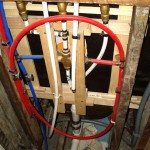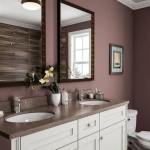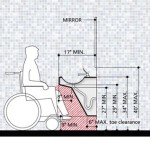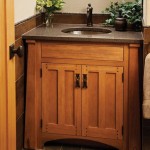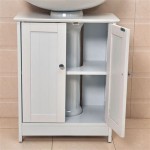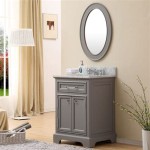Essential Aspects of Plumbing a New Bathroom
Transforming a new bathroom into a functional and attractive space requires careful attention to plumbing. By understanding the essential aspects of bathroom plumbing, DIY enthusiasts can successfully navigate this project.
## Step 1: Plan the Bathroom LayoutBefore starting any plumbing work, sketch out a detailed layout of the bathroom, including the location of fixtures (e.g., toilet, sink, shower/tub), walls, and windows. This plan will guide the placement of plumbing lines and fixtures.
## Step 2: Gather MaterialsEssential materials for bathroom plumbing include copper pipes, fittings (e.g., elbows, tees), a toilet flange, sink drain, shower valve, bathtub drain, and a P-trap for each sink and shower/tub. Consider using CPVC or PEX pipes for flexibility and corrosion resistance.
## Step 3: Install the Rough-In PlumbingRough-in plumbing involves running and securing pipes and drains for fixtures. Cut pipes to length, connect them using fittings, and secure them with pipe hangers. Ensure pipes are pitched correctly for proper drainage.
## Step 4: Install the ToiletInstall the toilet flange over the drain pipe in the floor and secure it with bolts. Place the toilet on the flange, aligning the bolts with the holes in the base. Tighten the bolts to secure the toilet.
## Step 5: Install the SinkConnect the sink drain to the P-trap and secure it to the countertop. Install the sink on the countertop and connect the water supply lines. Seal the joints between the sink, countertop, and walls with silicone caulk.
## Step 6: Install the Shower or TubConnect the shower valve and trim kit to the pipes. Install the bathtub or shower base, securing it to the walls and floor. Connect the drain and secure it with a rubber gasket.
## Step 7: Test the PlumbingTurn on the water supply and check for leaks at all joints and fixtures. Flush the toilet, turn on the sink faucets, and take a shower or bath to ensure proper water flow and drainage.
## Tips for Success- Use a level to ensure proper alignment of fixtures and pipes.
- Apply thread sealant to pipe joints to prevent leaks.
- Test all fixtures thoroughly before finishing the bathroom.
- Consult building codes and regulations to ensure compliance.
- Consider hiring a licensed plumber for complex projects or if you lack plumbing experience.
How To Plumb A Basement Bathroom Diy Family Handyman
:strip_icc()/SCP_173_04-a5f887244add47e48d7a24d0579341d7.jpg?strip=all)
The Ultimate Guide To Bathroom Plumbing Diagrams And Layouts
Plumbing Basics Howstuffworks
How To Install A Concealed In Wall Bathroom Plumbing System

Gallery Of Bathrooms Basics 6 Tips To Plan Your Bathroom Plumbing And Layout 13

How To Plumb A Bathroom With Multiple Plumbing Diagrams Hammerpedia

How To Plumb A Bathroom With Multiple Plumbing Diagrams Hammerpedia

How To Vent A Toilet Sink And Shower Drain

How To Plumb A Bathroom With Multiple Plumbing Diagrams Hammerpedia

New Home Plumbing Checklist Asi
Related Posts
